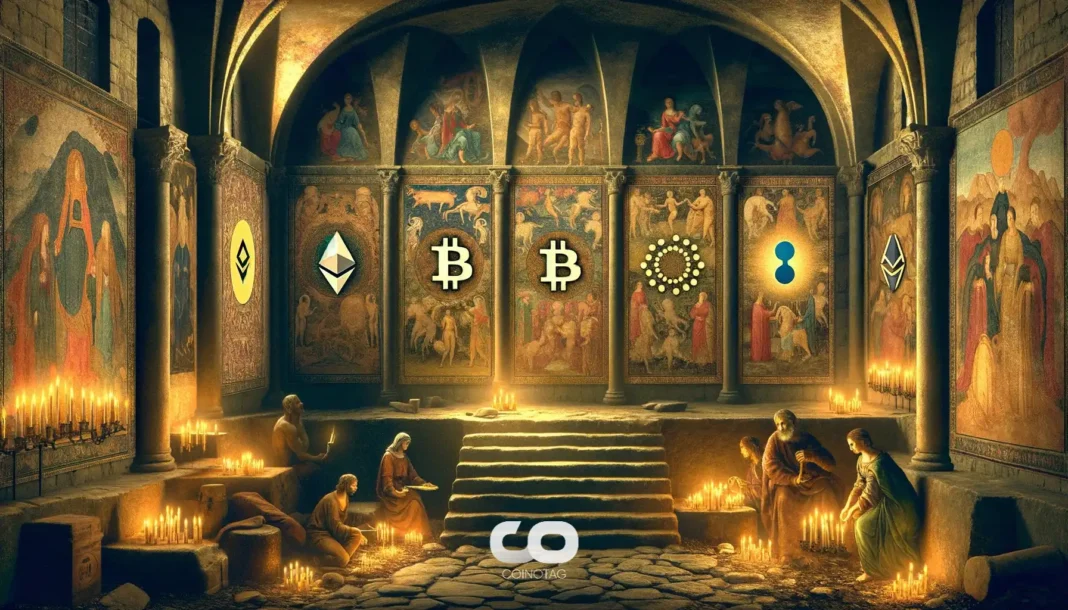-
Bitcoin FOMO, or Fear Of Missing Out, reveals contrasting behaviors between institutional whales and retail investors, shaping market dynamics in unique ways.
-
Institutional investors strategically enter markets after key price milestones, while retail investors often react emotionally at market peaks, influencing Bitcoin’s price trajectory.
-
According to Santiment, whale-driven FOMO acts as a market catalyst, providing liquidity and confidence that sustain rallies, unlike retail-driven FOMO which may signal trend exhaustion.
Explore how Bitcoin FOMO differs between institutional whales and retail investors, impacting market cycles and investment strategies in the crypto space.
Understanding Bitcoin FOMO: Institutional Whales vs. Retail Investors
Bitcoin FOMO, the anxiety of missing out on profitable opportunities, manifests distinctly among market participants. Institutional whales—large holders with significant capital—tend to exhibit calculated FOMO, entering positions after confirming strong upward trends. This behavior contrasts sharply with retail investors, whose FOMO is often impulsive and driven by social media hype or short-term price surges. Santiment’s on-chain analytics highlight that whale activity typically follows breaches of critical resistance levels, signaling confidence in sustained momentum. Conversely, retail-driven FOMO frequently coincides with market tops, marking potential reversal points. Recognizing these patterns is essential for investors aiming to navigate Bitcoin’s volatile cycles effectively.
The Strategic Role of Whale-Driven Bitcoin FOMO
Institutional investors wield considerable influence due to their ability to deploy massive capital strategically. Their FOMO is not a frantic rush but a deliberate move based on comprehensive research, including on-chain data and market sentiment analysis. When whales accumulate Bitcoin after significant price breakthroughs, they provide vital liquidity and validate bullish trends, encouraging further institutional and sophisticated investor participation. This dynamic creates a positive feedback loop that can propel Bitcoin prices higher over extended periods. Santiment’s data underscores that whale-driven FOMO often precedes sustained rallies, distinguishing it from the reactive buying behavior seen in retail participants.
Retail Bitcoin FOMO: Emotional Reactions and Market Implications
Retail investors, influenced by viral news and social media narratives, tend to experience FOMO near the peak of price rallies. This behavior often results in buying at elevated prices, which can exhaust upward momentum and trigger corrections. Unlike whales, retail investors typically lack access to deep analytics or strategic frameworks, making their market entries more susceptible to emotional biases. Santiment’s insights reveal that spikes in retail FOMO often coincide with increased volatility and liquidity challenges, as panic selling may follow once the rally loses steam. Understanding this cycle helps investors avoid common pitfalls associated with impulsive trading.
Leveraging On-Chain Analytics to Navigate Bitcoin FOMO
To differentiate between strategic and reactive FOMO, investors should prioritize data-driven approaches. Platforms like Santiment offer valuable tools to monitor whale movements, exchange flows, and network activity, providing transparency into market health beyond price charts. By tracking large transactions and wallet behaviors, investors can anticipate potential trend shifts and make informed decisions. Incorporating such analytics into investment strategies enhances risk management and reduces susceptibility to emotional trading, empowering investors to capitalize on genuine market opportunities rather than fleeting hype.
Practical Strategies to Manage Bitcoin FOMO and Enhance Investment Outcomes
Effective management of Bitcoin FOMO involves adopting disciplined investment practices. Key recommendations include:
- Prioritize Research: Utilize on-chain data and reputable analytics to inform entry and exit points.
- Recognize Market Cycles: Identify phases of retail exuberance and institutional accumulation to time investments better.
- Implement Risk Controls: Set stop-loss orders and profit targets to safeguard capital against volatility.
- Adopt Long-Term Perspectives: Focus on Bitcoin’s historical growth trends to mitigate reactionary decisions.
- Maintain Emotional Discipline: Avoid impulsive trades driven by fear or greed, sticking to a well-defined strategy.
By integrating these approaches, investors can transform the natural impulse of FOMO into a strategic advantage, aligning their actions with market realities rather than emotional impulses.
Conclusion
The distinction between institutional and retail Bitcoin FOMO is a critical factor shaping cryptocurrency market behavior. Institutional whales, guided by data and strategic foresight, often drive sustainable rallies through calculated capital deployment. In contrast, retail investors’ emotional responses can signal market tops and increased volatility. Santiment’s analysis provides invaluable insights into these dynamics, emphasizing the importance of data-driven decision-making. For investors seeking to thrive in Bitcoin’s evolving landscape, understanding and managing FOMO is not merely beneficial—it is essential. Embrace informed strategies, leverage on-chain analytics, and let disciplined investment principles guide your journey in the crypto market.






